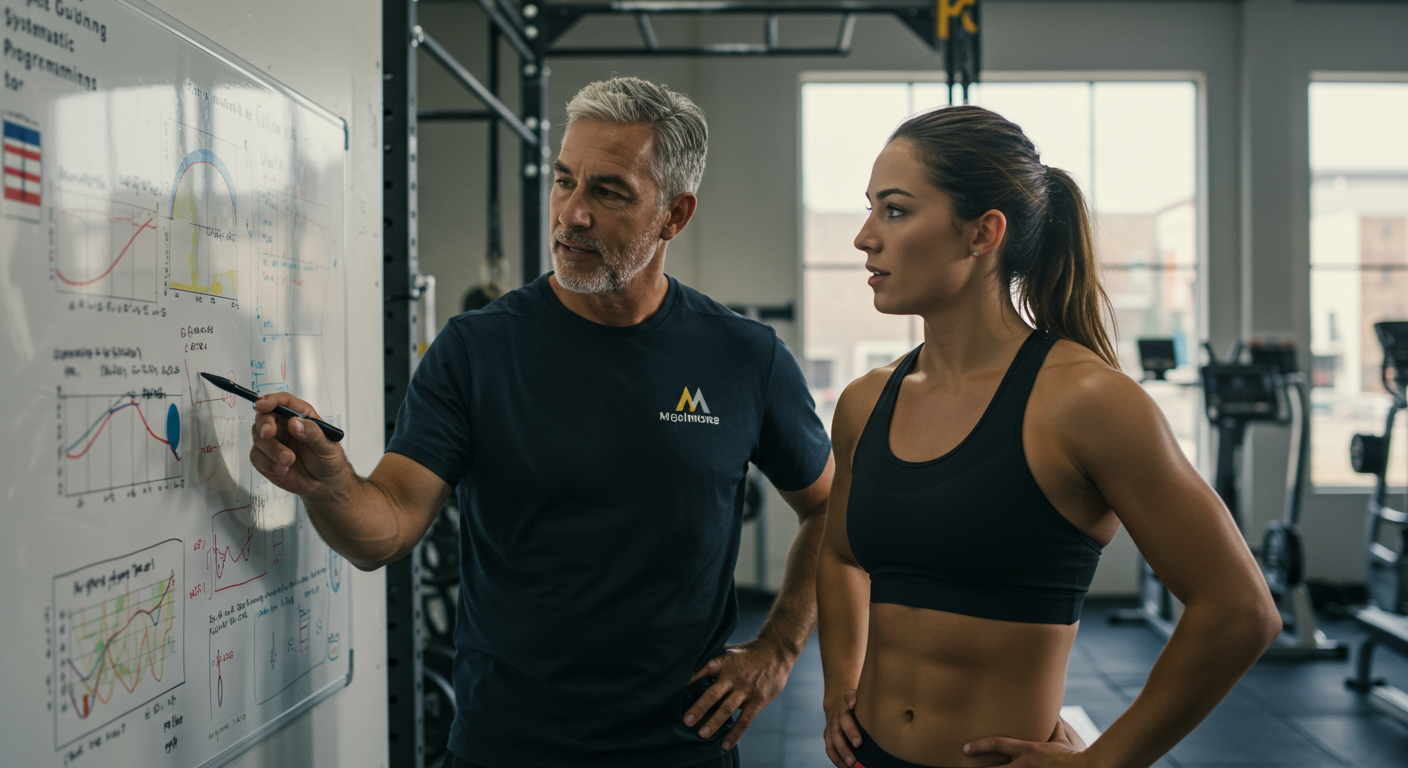Advanced Periodization Models
Block Periodization
Block periodization uses concentrated 2-4 week blocks, each targeting one specific adaptation. This allows maximum focus before moving to the next quality.
Typical block sequence:
- Accumulation Block: Volume focus, aerobic development
- Intensification Block: High-intensity, strength focus
- Realization Block: Competition-specific training
This works well for sports requiring multiple peak performances throughout the year.
Reverse Linear Periodization
Reverse linear periodization starts with high-intensity, low-volume training and gradually increases volume while decreasing intensity. This approach works better for endurance sports.
Best for:
- Endurance sports (marathon, cycling, triathlon)
- Long competitive seasons
- Aerobic capacity development
The Science Behind Effective Programming
Progressive Overload
All effective periodization uses progressive overload—gradually increasing training demands to force adaptation. This can be achieved through:
- Increasing total training volume
- Raising intensity or resistance
- Adding training sessions
- Making exercises more complex
Supercompensation
The supercompensation model explains how training temporarily reduces performance, followed by recovery that elevates performance above baseline. Good periodization times workouts to coincide with peak supercompensation.
Autoregulation
Modern periodization incorporates autoregulation—adjusting training based on individual readiness. This uses tools like:
- Rate of Perceived Exertion (RPE) scales
- Reps in Reserve (RIR) assessments
- Velocity-based training
- Wellness questionnaires
Practical Implementation
Step 1: Set Clear Goals
Start by identifying specific objectives and target dates:
- Primary competition dates
- Performance targets
- Testing periods
- Recovery phases
Step 2: Assess Current Fitness
Conduct baseline testing:
- Strength assessments
- Aerobic capacity tests
- Movement screening
- Sport-specific skill evaluation
Step 3: Design the Annual Plan
Map out the year with clear phases:
- Allocate time for each major phase
- Identify peak competition periods
- Plan recovery phases
- Build in flexibility
Step 4: Create Monthly Blocks
Develop 3-6 week blocks with specific focus areas:
- Define primary training goals
- Plan progressive loading
- Schedule recovery weeks
- Include testing points
Step 5: Structure Weekly Plans
Design weekly patterns that support monthly goals:
- Balance hard and easy sessions
- Ensure adequate recovery
- Sequence workouts logically
- Monitor athlete response
Common Mistakes to Avoid
- Skipping Recovery Weeks: Deload weeks are essential for adaptation
- Using the Wrong Model: Match the periodization approach to your specific goals
- Overcomplicated Programs: Maintain clear progression despite variety
- One-Size-Fits-All Approaches: Individualize based on athlete response
- Neglecting Recovery: Include sleep, nutrition, and stress management
Measuring Success
Track progress through multiple metrics:
- Sport-specific performance tests
- Strength and endurance benchmarks
- Training load tolerance
- Subjective measures like motivation and energy
Key Takeaways
- Different periodization models work for different goals and athletes
- Individualization is critical for success
- Progressive overload drives improvement regardless of model
- Recovery is as important as training
- Modern technology enhances periodization precision
- Systematic planning produces better results than random training
- Maintain structure while allowing flexibility based on feedback
By understanding these principles and applying them consistently, coaches can help athletes reach their highest potential while reducing injury risk.



